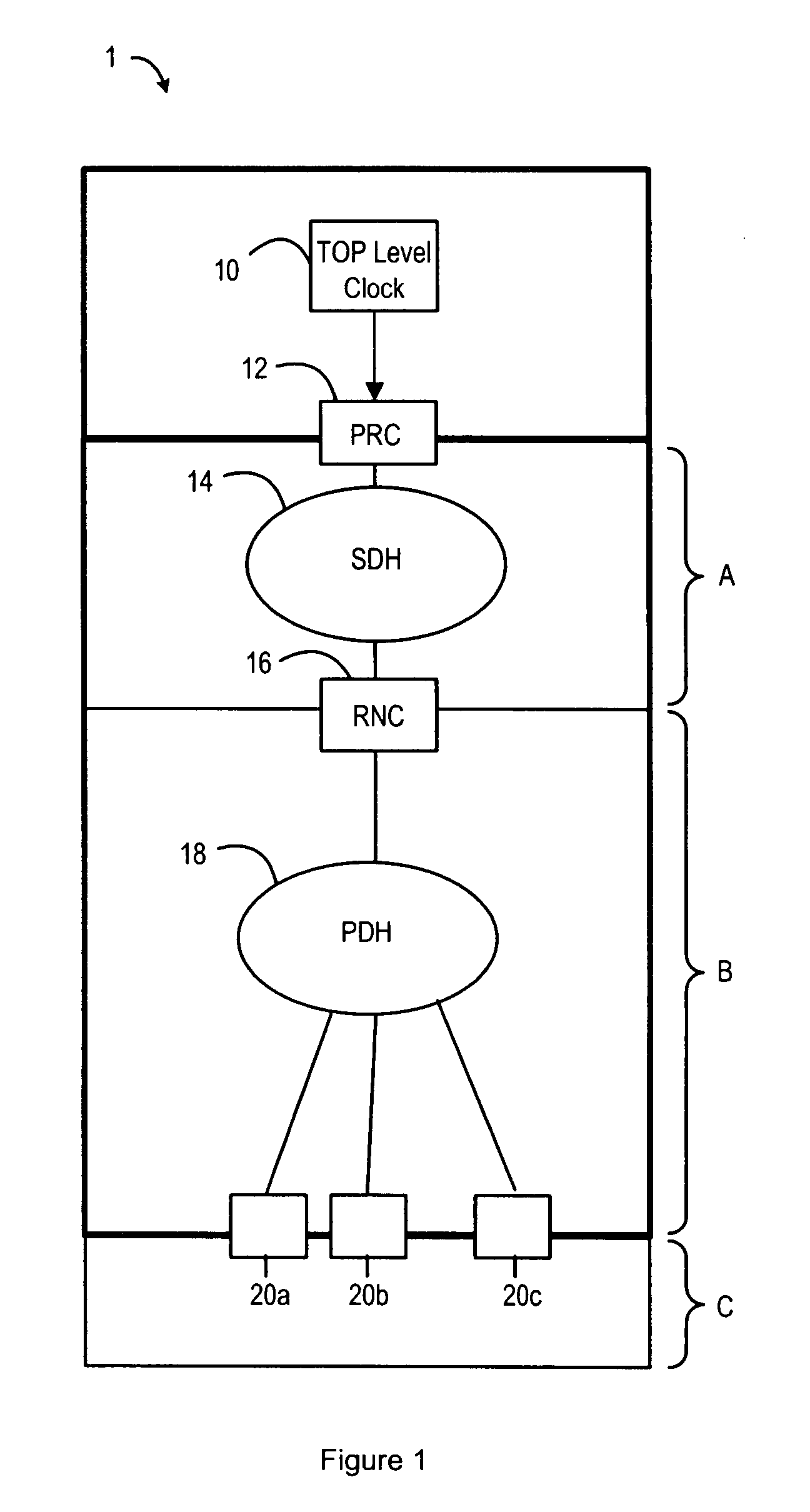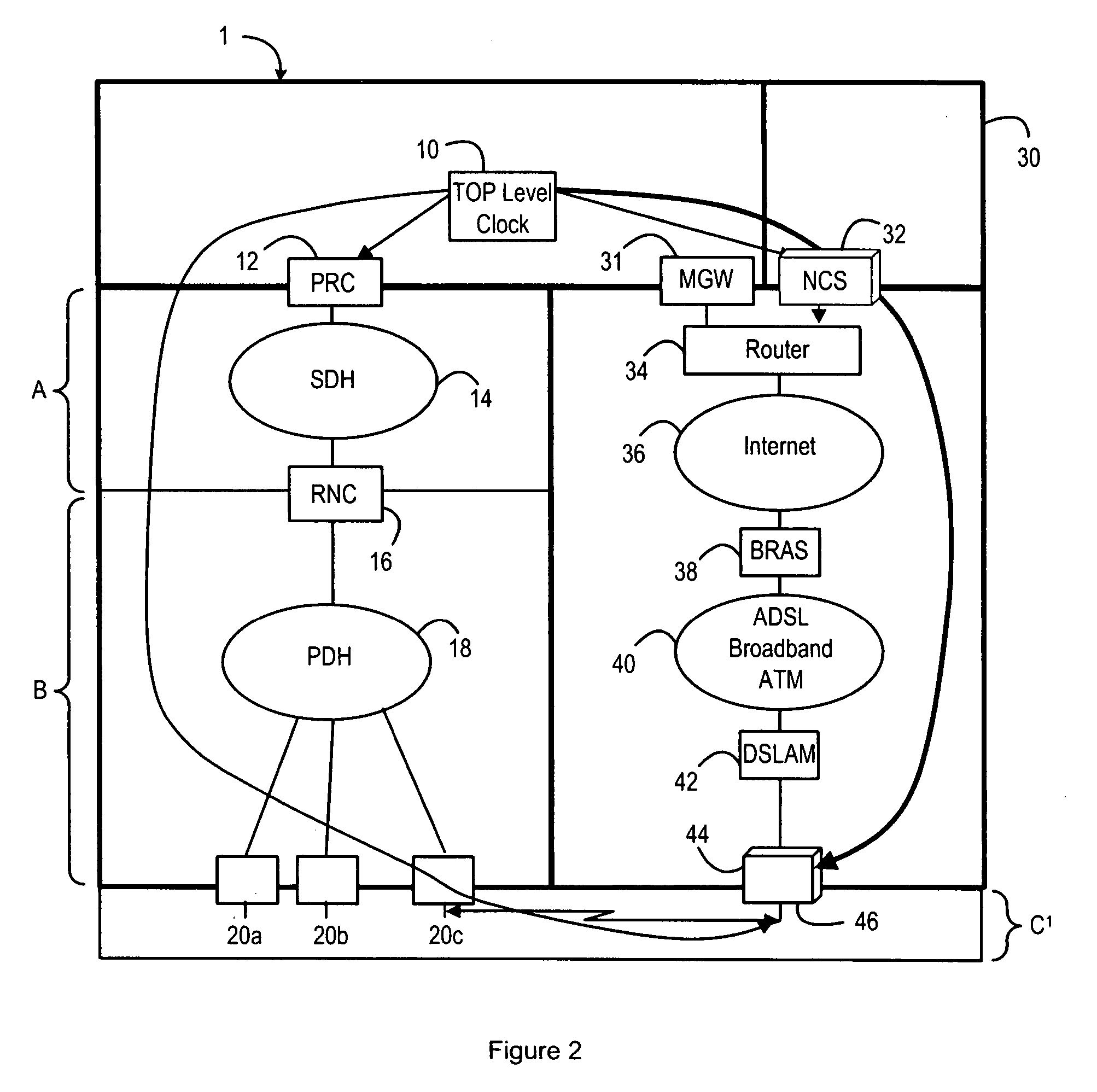Synchronising base stations
a technology of base stations and synchronisation signals, applied in the direction of synchronisation arrangement, time-division multiplex, electrical equipment, etc., can solve the problems of service degradation, ip based networks typically do not make use of timing synchronisation signals, and expensive oven controlled crystal oscillators
- Summary
- Abstract
- Description
- Claims
- Application Information
AI Technical Summary
Benefits of technology
Problems solved by technology
Method used
Image
Examples
Embodiment Construction
[0037]FIG. 2 illustrates a wireless telecommunications network that uses the known backhaul network shown in FIG. 1, together with a broadband IP based network. A residential basestation is shown at 44, and operates in parallel with other basestations 20a, 20b, and 20c. As before, the top-level clock 10 provides the basic timing reference for the system. It will be readily appreciated that the term “residential basestation” can include any appropriate basestation suitable for use in a wireless telecommunications network.
[0038] In the system illustrated in FIG. 2, and as is well known and understood, data is communicated between the core network using a gateway 31, and a router 34 connected to the internet 36. A Broadband Remote Access Server (BRAS) 38 connects the Internet connection with an ADSL network 40, which itself provides a broadband connection for the residential basestation 44, via a Digital Subscriber Line Access Multiplexer (DSLAM) 42.
[0039] In a first embodiment of th...
PUM
 Login to View More
Login to View More Abstract
Description
Claims
Application Information
 Login to View More
Login to View More - R&D
- Intellectual Property
- Life Sciences
- Materials
- Tech Scout
- Unparalleled Data Quality
- Higher Quality Content
- 60% Fewer Hallucinations
Browse by: Latest US Patents, China's latest patents, Technical Efficacy Thesaurus, Application Domain, Technology Topic, Popular Technical Reports.
© 2025 PatSnap. All rights reserved.Legal|Privacy policy|Modern Slavery Act Transparency Statement|Sitemap|About US| Contact US: help@patsnap.com



